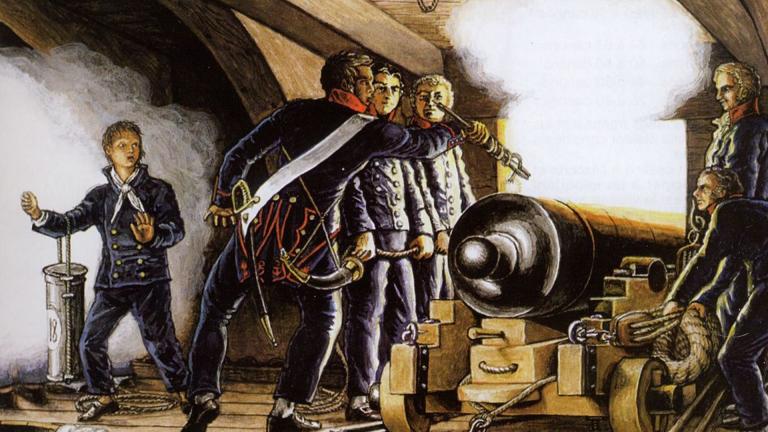
Read more about Ancient History

Many of us have had jobs we’d now rather forget. In fact, the world might have already largely forgotten them. At various stages of history, certain jobs were so unpleasant that they were banished as soon as technological advances allowed.
As revealed by the Sky HISTORY series Hazardous History With Henry Winkler, some work duties of the past would even be deemed too dangerous today. Here are just a few roles that have long gone or simply changed beyond recognition…
Hazardous History With Henry Winkler starts Monday 17 November 10pm on Sky HISTORY and HISTORY Play.
Have you ever wondered why barbershops have that iconic red-and-white barber’s pole attached outside? This trade sign is thought to date back to the Middle Ages, when barbers also performed surgery — making them ‘barber-surgeons’.
The red and white of the pole are said to represent the blood and bandages associated with barber surgeons’ work. But why were barbers doing surgery anyway?
It starts making more sense when you keep in mind that both haircutting and surgery require dexterous use of sharp implements. So, barber-surgeons would not only trim manes but also busy themselves with such duties as pulling teeth and carrying out amputations.
These days, people can easily catch up on the news online. Some people of older generations might watch the news on TV, listen to it on radio or read newspapers. So, how did people stay in the loop before any of these journalistic mediums existed?
At least as far back as the Medieval period, it was common practice for English citizens to listen to the town crier. This individual standing in the street would ring a bell before reading out important news to passersby.
The vocal aspect was important, as many townspeople could not read. Nonetheless, the town crier would also attach written news to the local inn’s door post. This is why many newspapers started incorporating the word ‘post’ into their names.
One of Britain’s greatest ever naval victories was the Battle of Trafalgar in October 1805. However, while Vice-Admiral Horatio Nelson was the most famous architect of that triumph, it’s too easy to overlook the crucial roles played by other sailors.
These included ‘powder monkeys’ — young boys who, during the heat of battle, would regularly carry fresh gunpowder to the ships’ artillery. These boys could be as young as 12, and were chosen for the task largely due to their impressive speed.
Of course, today, theme park rides go through various tests before they are open to the public. However, imagine being the guinea pig for a ride that, by modern standards, has been subjected to scant safety checks beforehand.
That’s what happened to Andy Mulvihill when he tested the Cannonball Loop, an enclosed water slide in Vernon, New Jersey, in 1985. The Cannonball Loop was so-called due to its vertical loop akin to that of a rollercoaster.
The Cannonball Loop was open for just one month due to the high number of injuries incurred by riders. Even when Mulvihill gave it a test ride, he wore protective ice hockey gear.
Towards the end of the 19th century, showman William 'Doc' Carver conceived the spectacle of ‘horse diving’. This saw a horse dive from a high platform — sometimes as high as 60 feet — into a large pool of water as a crowd watched.
Many exhibitions included a human riding the horse as it dived. Some of the riders (‘horse divers’, as they are casually known), including Lorena Carver and Sonora Webster, practically became celebrities.
Horse diving shows were held regularly at New Jersey’s Steel Pier from the 1920s until the 1970s. In 2012, Wayne Pacelle, the then-president and chief executive of the Humane Society of the United States, called horse diving 'a colossally stupid idea'.
World War I led the United States to train military aviators on how to fly Curtiss JN-4 'Jenny' biplanes. The federal government later sold many of these planes to private owners.
So, by the 1920s, many Americans had aviation expertise but didn’t know what to do with it. What they could do was buy biplanes surprisingly affordably (these biplanes were priced far lower than their original value).
This all ushered in the rise of ‘barnstorming’, where pilots made money taking other people on flights and performing stunts in the air. This craze largely ended after the United States started enforcing the Air Commerce Act in 1926, with safety measures placing new limits on barnstormers’ tricks.
Keen to hear about other exciting historical documentaries coming soon? Just subscribe to the Sky HISTORY Newsletter.